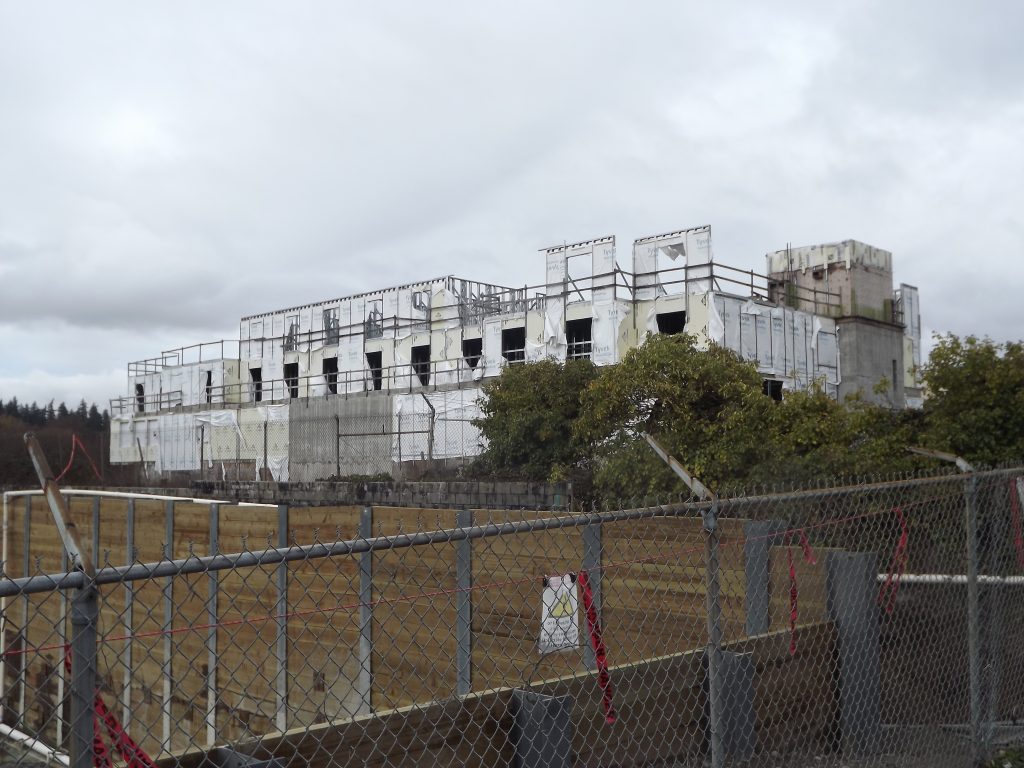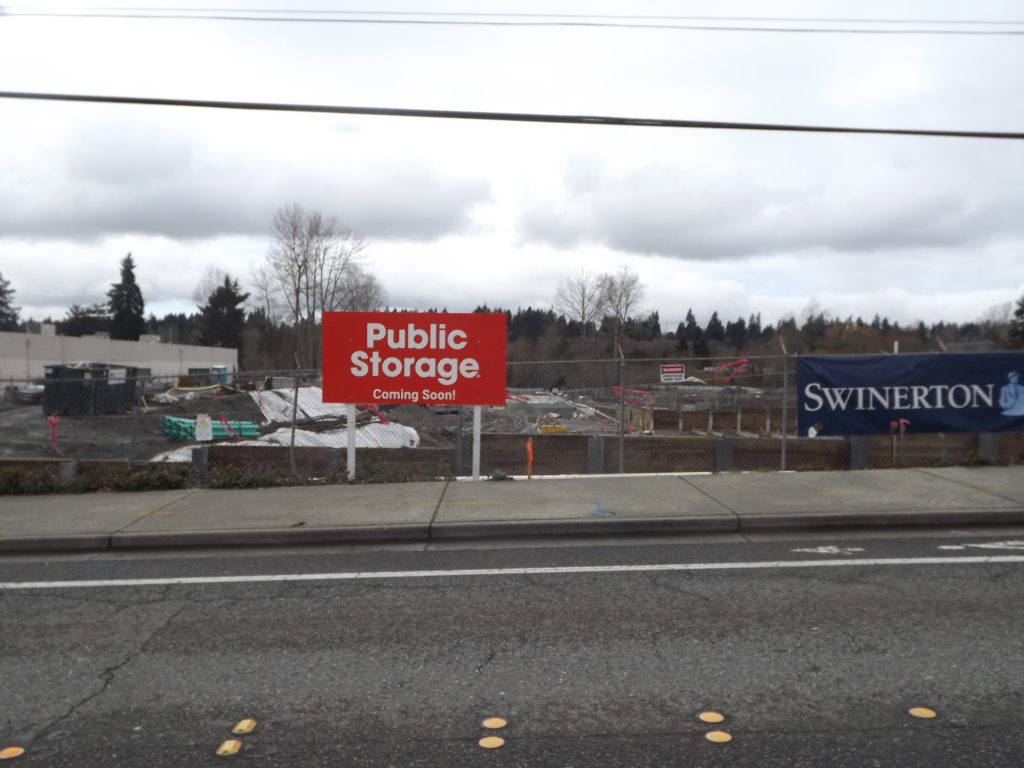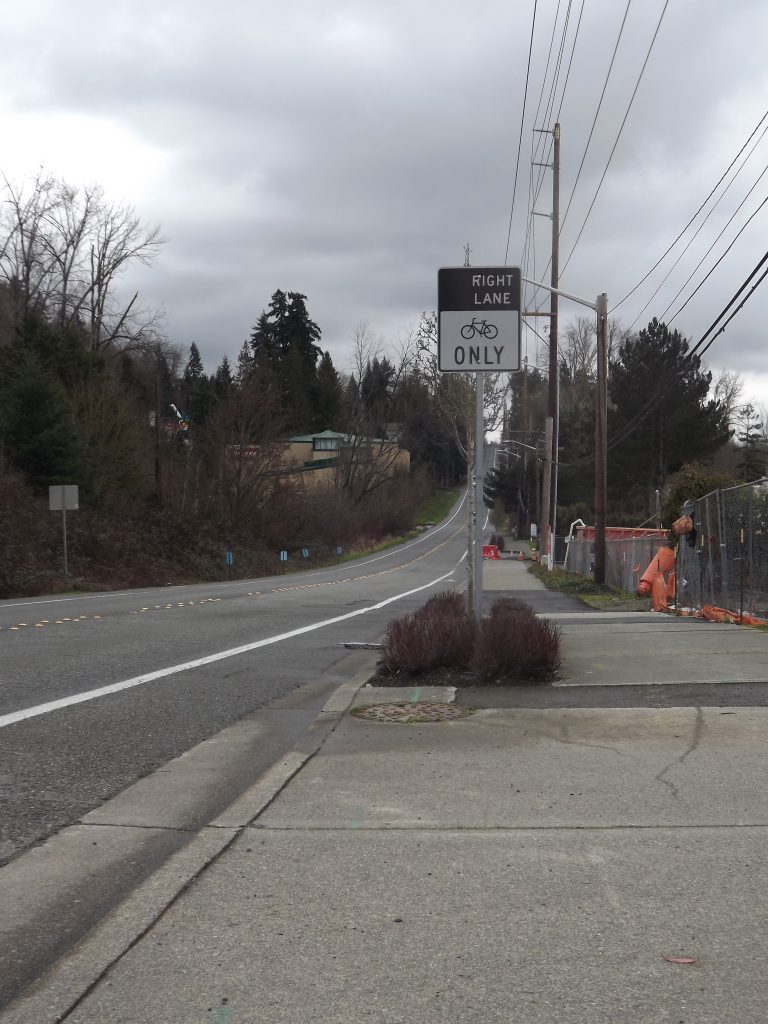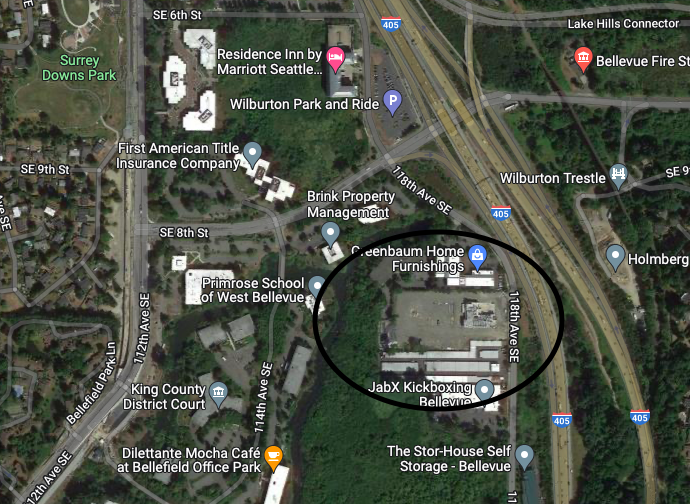
A collaboration between SRM Development and the nonprofit Downtown Action to Save Housing (DASH) is set to bring 235 homes near the future East Main Link light rail station in Bellevue. The 4.55 acre site is currently the home of a partially-constructed hotel building, which, by the end of 2024, will be converted into 100 units of housing available to those earning less than 60% of area median income (AMI). A second building, set to provide 135 units of housing for those earning between 80% and 100% AMI, will begin construction later this year and is slated to open by the end of 2023.
The $72 million dollar project is facilitated by a $25 million loan from Microsoft’s Affordable Housing Initiative, a plan from the corporation to invest $750 million into affordable housing projects throughout the Puget Sound region. In particular, the loan comes from the Expanded Land Acquisition Program — a partnership between the corporation and the state’s Housing Finance Commission that provides developments in East King County with loans that can cover up to 75% of a project’s land value in exchange for a 35-year affordability guarantee.
According to reporting from the Puget Sound Business Journal, the property was purchased in December for $32.5 million, meaning that land acquisition costs represent over 45% of the project’s forecasted budget. A purchase of over $7 million per acre for a soon to be residential site both adjacent to I-405 and in a firmly business-oriented corridor not only reflects the tech-fueled growth the city is experiencing, but also the scarcity of land available for multi-family developments. Because over 75% of Bellevue’s land is zoned for single-family development, and stated city policy is to concentrate growth in limited areas, the limited growth that happens outside of these areas comes at a premium.
For future residents wanting the urban experience of being able to meet their daily needs by walking, the development’s location likely represents a mixed bag. With I-405 to the east and Mercer Slough Nature Park to the southwest, further development opportunities near the site are limited. Parcels immediately to the south of the site are zoned for light industrial use, and construction is currently underway on a new five-story Public Storage facility — meaning a rezone and redevelopment are unlikely to happen anytime soon. Office space to the north of the site will likely provide little in the way of day-to-day uses that residents might need, such as grocery stores or childcare.
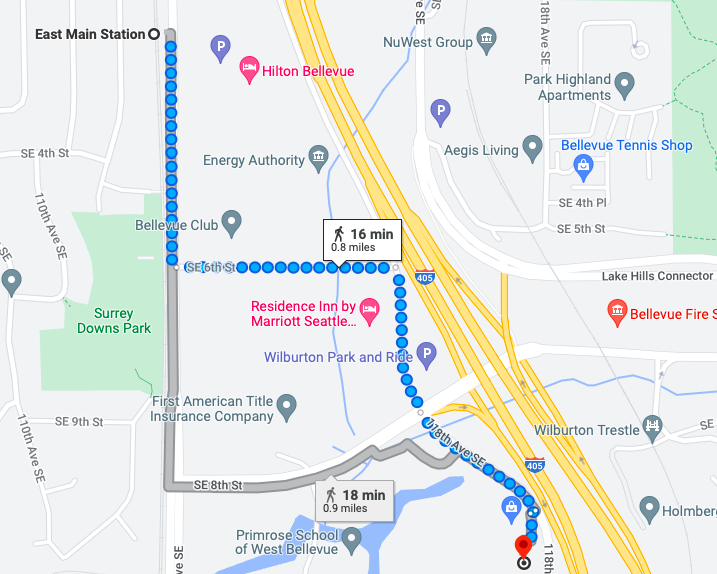
Future tenants, however, will have access to reasonable multimodal connections to other areas of Bellevue. Although the development’s interstate-adjacent location is not ideal, residents will have frequent daytime transit connections to Downtown, Lake Hills, and the Eastgate Park and Ride when King County Metro’s Route 220 begins service in 2023. As a low traffic street, 118th Avenue SE’s painted bike lanes can provide a connection for confident riders towards Eastrail and the I-90 Trail to the south, although bike connections to the north, including the crossing of SE 8th Street, definitely need to be improved. With the road designated as a priority bicycle corridor by the City of Bellevue, it’s likely it will be prioritized for further infrastructure improvements, increasing accessibility to more riders. And with East Main Station Link light rail station located three-quarters of a mile away, improved bike facilities would transform what would otherwise be a rather long walk to light rail into a manageable trip.
With the recent rezone of the East Main Transit Oriented District that could bring 1,500 homes into that area, it’s likely that redevelopment in that area will provide some of the amenities that residents of this future housing will need. So although much more work is needed in order to close Bellevue’s gap in affordable housing, especially for people earning less than 50% AMI, this project is a net benefit to a city rapidly becoming unaffordable to all but the most affluent.
Chris Randels is the founder and director of Complete Streets Bellevue, an advocacy organization looking to make it easier for people to get around Bellevue without a car. Chris lived in the Lake Hills neighborhood for nearly a decade and cares about reducing emissions and improving safety in the Eastside's largest city.

